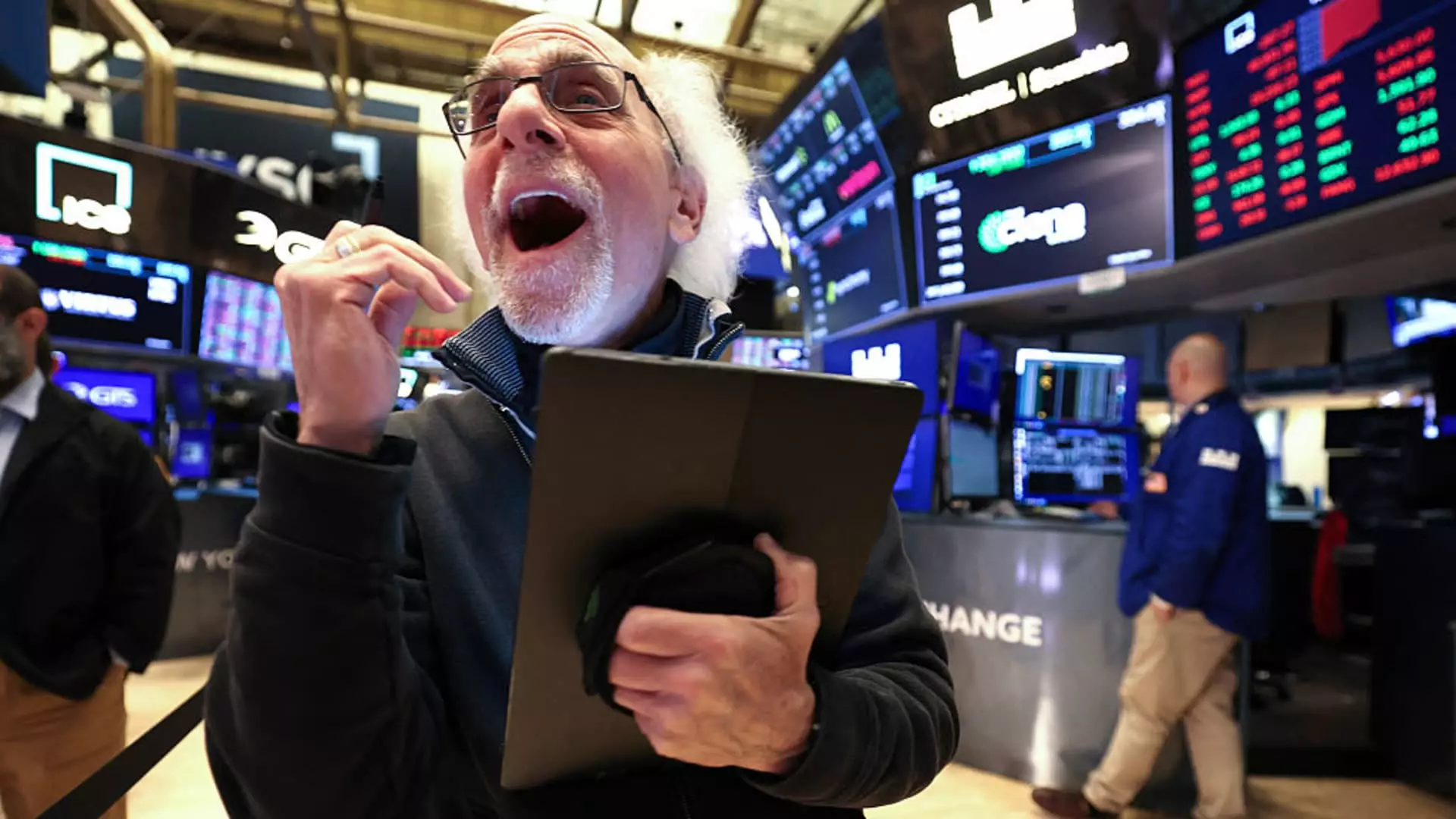Recent headlines trumpet the U.S. stock market’s record-breaking highs with almost celebratory zeal. The S&P 500 and Nasdaq Composite reaching unprecedented peaks paint a picturesque image of economic vigor and investor confidence. Yet, beneath this glossy surface is a tableau riddled with contradictions and looming risks that deserve sober reflection. The market’s astonishing 24% rebound since early April seems less a sign of robust underlying health and more the result of a cocktail of speculative enthusiasm, artificial intelligence hype, and geopolitical safe-haven investing. It’s tempting to interpret these gains as vindication of current policy direction, but that would be a dangerous oversimplification.
The Overhyped AI Frenzy
Much of the recent euphoria traces back to the generative AI trade, which has ignited investor imagination and sent chipmakers and cloud giants like Nvidia, Broadcom, and Microsoft to new heights. Nvidia, for instance, now boasts a staggering $3.8 trillion market valuation, reflecting sky-high expectations rather than unequivocal fundamental improvements. The excitement over deals like the AI chip shipment to Saudi Arabia seems to gloss over the complexities of U.S.-China technology tensions and the fragility of global semiconductor supply chains. The current AI boom, while impressive, risks becoming a classic bubble fueled by hype rather than sustainable innovation. The question is: how much of this rally is grounded in actual earnings growth and how much is merely speculative chasing of the “next big thing”?
Moreover, industrial companies like GE Vernova riding on the AI infrastructure buildout also benefit from these optimistic projections. But one must ask whether infrastructure expansion can maintain its rocket-like trajectory once the initial phase of AI adoption plateaus, or if these stocks might suffer setbacks when investors start demanding more grounded financial results.
Defense Stocks: A Double-Edged Sword
Another noteworthy trend is the shift towards defense and cybersecurity stocks amid escalating geopolitical tensions, especially in the Middle East. Companies like CrowdStrike, which soared to new highs, have become apparent benefactors of investors seeking safe harbors from an increasingly unstable global environment. While defense spending and cybersecurity needs are indeed unlikely to disappear, investing heavily in these sectors also reflects investor anxiety rather than confidence. The heightened demand for protection against virtual and physical threats mirrors a world growing more fragmented and perilous—not one of hopeful progress.
This inclination toward “safe” equities carries a somber undertone: it signals unease with the current geopolitical landscape rather than unbounded optimism about economic futures. Thus, while these stocks may seem attractive, they are largely priced with risk premiums baked in, tethering their valuations to ongoing conflict rather than growth alone.
Resilience or Illusion in the U.S. Economy?
Federal Reserve Chair Jerome Powell’s recent comments about the economy being “still solid” have buoyed market sentiment, but this optimism arguably overlooks significant vulnerabilities. The Fed’s willingness to “wait” on interest rate cuts reveals the delicate balancing act between controlling inflation and avoiding premature easing that could destabilize markets. Meanwhile, the promise of increased IPO activity and the rally in financial stocks like Goldman Sachs seem more reflective of Wall Street’s penchant for deal-making and market liquidity than robust economic fundamentals.
Capital One’s record highs, buoyed by its acquisition of Discover, provide an interesting case in point. While consumer spending appears stable for now, the credit sector is inherently sensitive to shifts in economic growth and consumer confidence. Overreliance on favorable economic conditions can breed complacency, especially when broader macroeconomic headwinds remain unresolved.
A Market Distorted by Policy and Speculation
Underlying these market headlines is the persistent shadow of President Trump’s trade policies and tariffs introduced earlier in the year, which initially sparked considerable volatility. The swift recovery since that shock underscores a market more responsive to policy signals and liquidity than to hard economic realities. The interplay between Federal Reserve policy, international trade dynamics, and geopolitical instability creates a volatile backdrop against which these stock market records have been set.
It is worth emphasizing that the dazzling highs are less about economic fundamentals and more about a confluence of factors including speculative fervor around AI, defensive positioning in uncertain times, and a Fed-led liquidity environment. Such conditions often sow the seeds for correction rather than sustained growth.
Investor Caution Is Crucial
Investors should approach the current market with cautious skepticism rather than exuberant confidence. The relentless rally of leading stocks obscures persistent uncertainties—from ambiguous trade policies to geopolitical flashpoints and the Federal Reserve’s cautious stance on monetary policy. Blindly chasing these records could lead to disillusionment when the inevitable complications manifest.
While growth sectors like AI and cybersecurity should remain part of diversified portfolios, they should not overshadow the need for disciplined risk management and awareness of broader economic shifts. The market’s recent performance, though impressive, is more a reflection of investor psychology and short-term catalysts than an unshakeable foundation for future gains. Recognizing this distinction is essential for navigating the choppy waters ahead.

